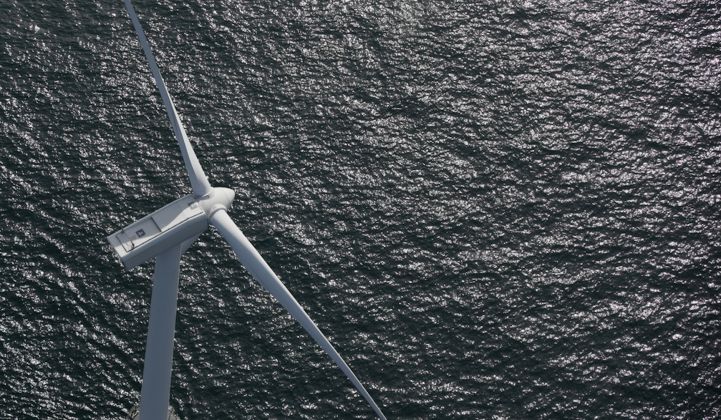A tripling of European offshore wind growth needed to meet the Paris Agreement climate goals is realistic between now and 2045, say experts.
“The political will to support offshore wind goes hand in hand with cost reductions,” said Michael Guldbrandtsen, managing consultant for offshore and manager of the Europe, Middle East and Africa research team at MAKE Consulting.
“If we continue to see costs dropping, and developers show that they are capable of constructing wind farms at very low subsidy levels, then I think we could see more capacity coming on-line toward 2030.”
The comments followed a recent warning by Navigant-owned Ecofys that Western Europe will need to install some 230 gigawatts of offshore wind across the Atlantic and North, Baltic and Irish Seas in order to meet the Paris targets on decarbonization of the energy system.
“With 13 gigawatts installed currently,” said Ecofys, “the region is far from the required total. To realize this growth, the offshore wind installation rate would have to triple from the current 3 gigawatts a year to approximately 10 gigawatts a year in 2030.”
Michiel Müller, managing director at Ecofys, also said he believed this was an achievable target. “Currently, I’m pretty optimistic that this can happen,” he told GTM.
“What I’ve seen over the last couple of years is a very strongly increased political commitment to pursue this direction. This is supported by an industry that demonstrates it can decrease its costs significantly in a short period of time, making it very realistic.”
The Ecofys research was originally published in March and aimed to see how Europe could achieve zero carbon emissions before 2050.
This would require a 50 percent reduction in total energy demand, compared to 2010, and a full decarbonization of the electricity supply by around 2045.
Ecofys restricted its study to countries in north Western Europe, and specifically the British Isles, Benelux, France, Germany and the Nordics.
The study accounted for the technically and economically feasible growth that might occur in onshore carbon-free generation sources such as biomass, hydro, solar and onshore wind.
It also assumed no new nuclear plants would be built beyond the already-troubled Flamanville 3 and Hinkley Point C projects, located in France and the U.K., respectively.
With practically all of Europe’s nuclear fleet due for retirement in the run-up to 2050, this would leave nuclear catering to a miniscule portion of the study area’s grid mix by 2045, compared to a roughly one-third share of electricity generation in 2010.
These onshore sources would only be able to supply 55 percent of the energy needed by countries in the region, Ecofys calculations showed. The research concluded offshore wind would be “pivotal” in decarbonizing the electricity supply.
Of the 230 gigawatts of offshore capacity required, 180 gigawatts could be installed in the North Sea, Ecofys said. This presents challenges because the North Sea is an important nature area that is used intensively by a wide variety of economic sectors.
Even assuming an average offshore wind turbine size of 8 megawatts, which represents close to the top end of the machines currently on order, around 22,500 turbines would need to be installed in the North Sea to deliver the capacity needed for decarbonization.
The space is there, said Müller, but what remains unclear is how so many turbines might affect marine ecosystems and wind resource.
Another problem is that all this wind power will increasingly need to be shunted back and forth to balance out local peaks and troughs in production.
Ecofys calculates between 50 and 80 gigawatts of interconnection capacity might be needed between the British Isles, mainland Europe and the Nordics.
“The onshore grid is an essential part of the North Sea grid, too, and it needs to cope with new flow patterns,” the consultancy observed.
A final point, not addressed by Ecofys, is how the offshore wind industry might cope with a growing requirement to use floating turbine technologies in water depths that are beyond the scope of traditional foundations.
"Floating offshore wind remains in its infancy, and this means that it brings with it a number of risks,” said Robert Bates, an assistant underwriter at the renewable energy insurer GCube.
“In the first instance, the wind turbines and supporting infrastructure need to prove they can perform in what are often challenging marine conditions.”



